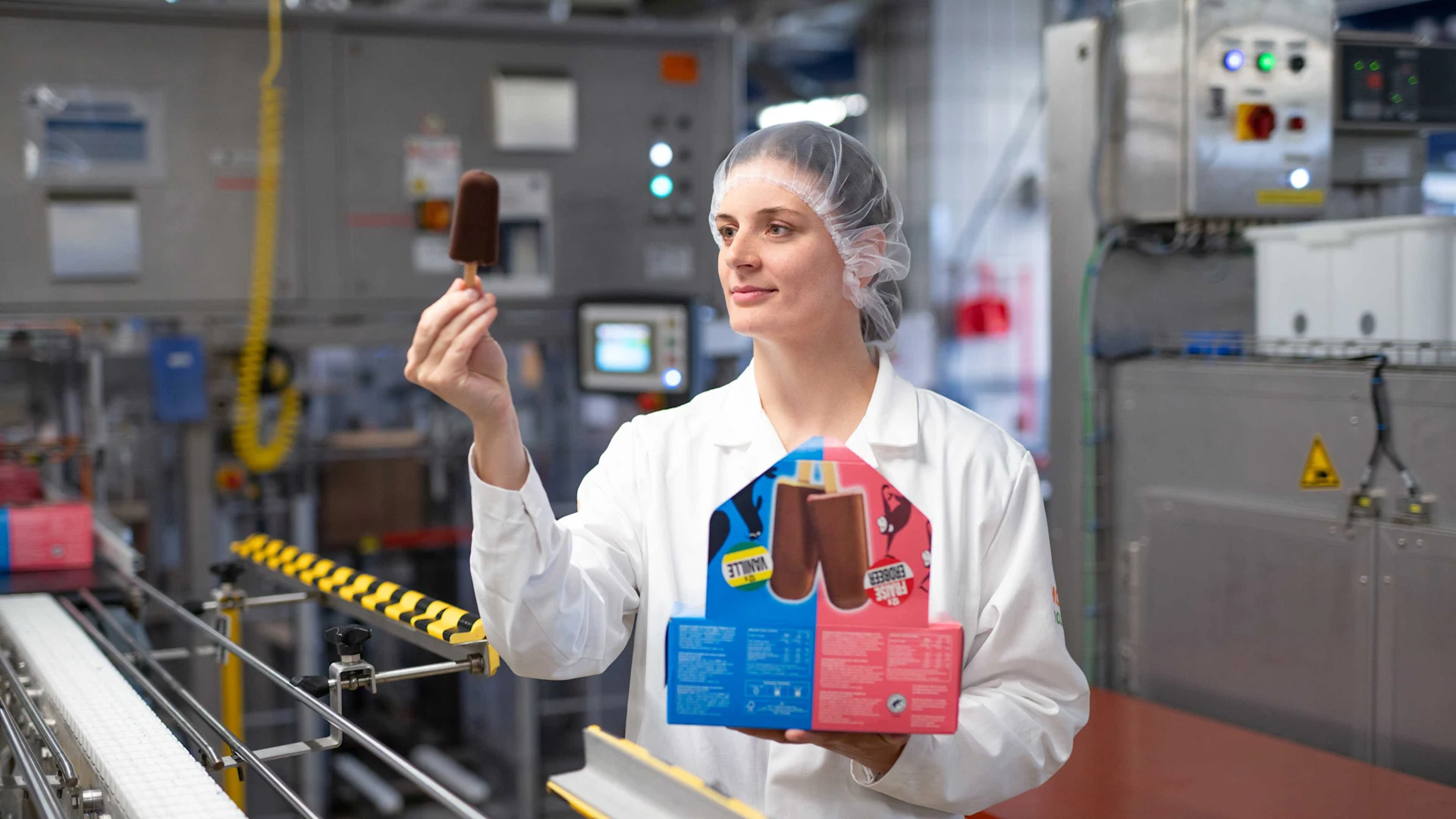
Migros Group
Food safety at Migros
Strict rules for the production of foods like iconic Migros ice cream ensure top quality and the best flavour.
navigation

Migros Industrie
Oliver Höfler and his team make pasta for Migros in Buchs, in the canton of Aargau. Why he only adds a little sauce to pasta and the mistakes you should avoid when cooking it.
That was after a visit to Garofalo, a pasta producer and Migros supplier from Gragnano near Naples. Afterwards, I had lunch with two employees. They explained that people in the poor south of Italy have always tried to get the most flavour out of the simplest food. Perhaps to prove the point, they ordered penne with tomato sauce.
right? However, the penne were cooked perfectly al dente, the sauce was made from these wonderfully flavoursome local tomatoes, with fresh basil and a very subtle hint of garlic. The result was an explosion of flavour that I’ll never forget.
You can cook pasta as a dull side dish or you can celebrate the flavour.
Not really, because I’m a very mediocre cook, and even I can manage to put a decent plate of pasta on the table. The key factor is food awareness: you can cook pasta as a dull side dish or you can celebrate the flavour and get the most out of it, as the southern Italians do. You’ll end up full either way.
Not using enough water to cook with and using high heat on the induction hob will invariably cause the pasta to stick to the bottom of the pan. Don’t try to do a thousand other things while trying to cook pasta – you might even forget to add the salt. Adding a huge dollop of sauce to delicious pasta is another absolute no-no. You won’t taste the grain at all.
Personally, I love the flavour of wheat. The more sauce that’s added to pasta, the more its own flavour is overpowered. That’s why I often eat it with just a dash of olive oil and fresh herbs.
Like the Italians, I prefer robust pasta like our M-Classic al bronzo spaghetti, fusilli and penne. They are pressed through bronze moulds – which is where their name comes from – giving them a course surface to which the sauce sticks better. Garofalo makes really great pasta too. And then there’s our traditional pappardelle and tagliatelle, but they fall into the Sunday pasta category in my view. In autumn, for example, they go wonderfully well with a creamy mushroom sauce. I’m licking my lips at the thought (he laughs).
A premium quality pasta. The traditional pappardelle, tagliatelle and taglierini aren’t pressed through a mould, but are rolled instead. This gives them a completely different texture. They are also made from exclusive Swiss durum wheat that meets IP-Suisse quality standards and free-range eggs from Switzerland. It couldn’t be more Swiss.
It is not straightforward. Firstly, a dough with the correct moisture content is vitally important. If the mixture of durum wheat semolina and water is too wet, it virtually flows through the moulds which means the pasta doesn’t get the right shape. If it’s too dry, so much pressure is required that the system will switch off at some point.
Our pasta dough here in Buchs consists of 32% water and is pressed through the moulds at over 100 bar of pressure. This has proven to be a successful method for many shapes.
The most challenging part of the production process begins - the drying phase. That’s where the most expertise is required and where most can go wrong.
If we dry the pasta too quickly or the temperature is too high, the pasta cracks and then cannot be sold. We aim to minimise this – if it does happen though, this broken pasta is ground and added to the next dough. We don’t throw anything away.
We dry our pasta at a temperature of around 85°C for four to six hours using a district heating system that does not use any fossil fuels. During this period, the water content must drop from 32% to 13%. This guarantees food safety – and a shelf life of several years if stored properly.
14% to 15%. It’s strange when you think about it, as in the form of dried pasta durum wheat regains its original water content. But there’s a reason for everything obviously. We soak the ground grain in the dough so that everything is evenly mixed and can be pressed through the moulds well. This means having to remove water from the pasta afterwards ...
That varies significantly. 50% to 60% for al dente. And up to 80% if you prefer it really soft.
I have to be able to see and feel a product and then taste it with my team.
I think so. Business administration is a key part of my job – but that alone wouldn’t satisfy me. I have to be able to see and feel a product and then taste it with my team. Ultimately, I want to know what goes out to the stores and customers, and be able to vouch for it with absolute confidence.
They only cook with water too. I’ve had several opportunities to visit pasta producers in Italy, including Migros suppliers. They face exactly the same challenges in production as we do. There’s a shortage of skilled labour in Italy too, but there’s definitely one thing they do better.
They are passionate about their products and credibly convey their pride to the whole world. Food is still very important in Italy: people sit at the table, take their time and savour it. Pasta is often served as a starter and in a very appetising way. Italian manufacturers market this wonderful culture perfectly.
What exactly do we do? Dive into our everyday life with fascinating stories from our branches, manufacturing operations and much more.